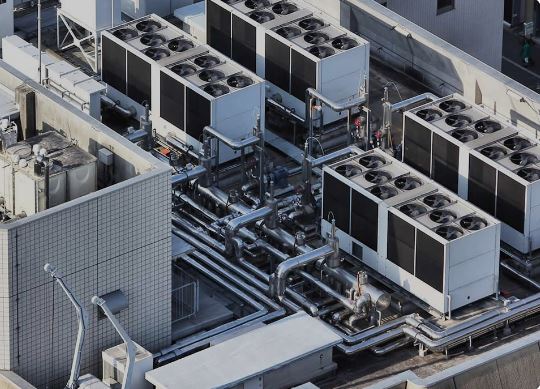Optimizing HVAC Systems in Florida’s MEP Design
Florida’s subtropical climate presents a distinct challenge for MEP (Mechanical, Electrical, and Plumbing) designers. The state’s intense heat, high humidity, and frequent storms demand HVAC systems that perform reliably and efficiently. Proper design and material selection are crucial to maintaining indoor comfort and reducing long-term maintenance costs.
1. The unique challenges of designing for Florida’s climate
Florida’s weather includes sweltering summers, mild winters, and high humidity. These conditions can quickly overwhelm poorly designed HVAC systems. Effective systems must cool and dehumidify indoor spaces while maintaining good air quality. Without these capabilities, buildings may experience mold growth, high energy use, and reduced occupant comfort.
Energy efficiency is also critical. High heat and solar gain can increase cooling loads significantly. Systems must balance comfort and performance while minimizing operating costs.
2. Understanding the importance of HVAC systems in Florida’s MEP design
Proper HVAC design is crucial to Florida’s MEP projects. It affects comfort, energy use, and building durability. Each project, from coastal resorts to urban offices, requires tailored solutions.
Systems must address heat, humidity, and weather resilience. Using HVAC systems with high SEER ratings and built-in dehumidification supports long-term performance. The design must also anticipate extreme summer temperatures and seasonal fluctuations.
3. How to design for high humidity and heat
Managing moisture is critical in Florida. High humidity leads to discomfort, mold, and corrosion. Dehumidifiers, high-efficiency air handlers, and desiccant systems offer effective moisture control.
Material selection matters too. Stainless steel or treated components resist rust and corrosion. Strategic ventilation using fans, vents, and grilles enhances airflow and moisture removal.
4. What are the most common HVAC design mistakes in Florida?
As a designer of mechanical, electrical, and plumbing (MEP) systems in Florida, it’s crucial to avoid the most common HVAC design mistakes that can lead to inefficient and costly systems. In the Sunshine State, where the subtropical climate is characterized by high humidity and sweltering temperatures, even small mistakes can have a significant impact on the comfort and energy efficiency of a building.
One of the most common mistakes is failing to consider the importance of adequate cooling and dehumidification. Florida’s tropical climate means that humidity levels can soar, leading to mold growth, corrosion, and other issues. Nevertheless, many HVAC systems are designed to prioritize cooling over dehumidification, resulting in systems that are unable to effectively remove excess moisture from the air. This can lead to a range of problems, including reduced air quality, increased energy consumption, and even structural damage to the building.
Another common mistake is neglecting to account for the impact of natural ventilation on the building’s HVAC system. In Florida’s warm and sunny climate, natural ventilation can be an effective way to reduce the load on the HVAC system, especially in areas with high airflow rates. However, many designers fail to consider the impact of natural ventilation on the building’s temperature and humidity levels, leading to over-designed or oversized HVAC systems that are not optimized for the building’s specific needs.
5. How to design for wind-borne debris and hurricane-force winds
Florida’s unique geography and climate make it a haven for tropical storms and hurricanes, which can wreak havoc on buildings and infrastructure. As MEP designers in the Sunshine State, it’s crucial to prioritize wind-borne debris and hurricane-force winds in your design considerations. Imagine the devastating effects of a Category 5 hurricane, with winds reaching speeds of over 157 miles per hour, tearing through a building’s exterior, causing damage to the HVAC system, and compromising the indoor environment.
When designing HVAC systems in Florida, it’s essential to incorporate features that can withstand the fury of these powerful storms. One crucial aspect is to ensure that the system is designed to resist wind-borne debris, such as flying glass, roofing materials, and other objects that can be propelled by strong winds. This can be achieved through the use of impact-resistant materials, securing components, and designing the system to absorb and dissipate the energy of debris impacts.
Another critical consideration is the ability of the HVAC system to withstand hurricane-force winds. This may involve designing the system to be flexible, allowing it to absorb and flex under wind loads, or incorporating anchors and restraints to prevent the system from being displaced or dislodged. Additionally, designing the system to be easily accessible and maintainable is crucial, as this will enable prompt repair and replacement of damaged components, minimizing downtime and ensuring the continued functionality of the system.
6. Strategies for designing HVAC systems for coastal communities
Florida’s unique coastal climate presents a unique set of challenges for designing HVAC systems that can effectively maintain comfortable indoor temperatures while withstanding the region’s intense humidity and salt-laden air. As MEP designers in the Sunshine State, it’s crucial to factor in the coastal environment’s impact on equipment performance and durability. This requires a deep understanding of the region’s specific weather patterns, including the intense heat and humidity of summer, as well as the potential for saltwater corrosion and flooding.
When designing HVAC systems for coastal communities, it’s essential to consider the use of corrosion-resistant materials, such as stainless steel or fiberglass, to minimize the risk of equipment failure due to saltwater exposure. Additionally, specifying equipment with high-efficiency filters and coils can help to reduce the impact of salt-laden air on system performance. Furthermore, incorporating features such as surge arresters and lightning protection can help to safeguard against the frequent thunderstorms and electrical storms that are common in coastal Florida.
By taking these factors into account, MEP designers can create HVAC systems that are not only effective in maintaining indoor air quality and temperature, but also durable and resilient enough to withstand the unique challenges of Florida’s coastal climate. By prioritizing the specific needs of coastal communities, designers can ensure that the HVAC systems they design are optimized for performance, reliability, and longevity.
7. Benefits of using high-efficiency HVAC systems in Florida
High-efficiency HVAC systems offer many advantages in Florida. They reduce energy use, lower bills, and improve comfort. Some systems cut energy costs by as much as 50%.
They also reduce the strain on Florida’s power grid during summer. These systems last longer, require less maintenance, and reduce replacement costs—offering strong long-term value.
8. Considerations for designing for indoor air quality in Florida
Florida’s heat and humidity can worsen indoor air quality (IAQ). Moisture causes mold, while pollen and dust affect breathing. Designing for IAQ means focusing on moisture control, air filtering, and ventilation.
Humidity control comes first. Air conditioning and ventilation systems should remove excess moisture. Use mold-resistant materials and finishes when possible.
High-quality filters, such as HEPA or UV options, help remove airborne particles. This improves comfort and reduces health risks.
9. How to design for energy efficiency and sustainability in Florida
In Florida, energy efficiency isn’t optional—it’s necessary. HVAC systems must handle high humidity and heat while consuming less power.
Use units with high SEER ratings and energy recovery ventilators. Incorporate radiant cooling and superior insulation. These features lower energy use and improve comfort.
Flexible design is important too. Zoned cooling and variable air volume systems adjust to changing weather. This improves energy performance and comfort year-round.
10. Choosing the Right Building Materials
Materials impact HVAC performance. Roofs need UV-resistant membranes. Walls should resist moisture. These materials reduce stress on HVAC systems and extend their lifespan.
In hurricane-prone areas, impact-resistant windows and extra structural support protect systems. Salt-resistant materials help in coastal zones. The right construction choices improve system performance and building safety.
11. How to integrate HVAC systems with other building systems in Florida
In Florida’s sweltering climate, creating a harmonious symphony of building systems is crucial to maintain a comfortable and energy-efficient indoor environment. HVAC systems, in particular, play a vital role in this symphony, working in tandem with other systems to ensure a seamless and effective operation. This is where the art of integration comes into play, as designers must carefully consider how to marry HVAC systems with other building systems, such as plumbing, electrical, and fire protection.
The integration process begins with a thorough understanding of the building’s design, occupancy, and operational requirements. By taking into account factors such as natural ventilation, solar radiation, and humidity levels, designers can optimize the HVAC system to work in harmony with other building systems. For instance, a well-designed HVAC system can be programmed to synchronize with the building’s lighting system, adjusting airflow and temperature to complement the natural light and heat gain.
12. Best practices for designing HVAC systems for commercial and residential buildings in Florida
The Sunshine State’s unique climate presents a distinct set of challenges when it comes to designing Heating, Ventilation, and Air Conditioning (HVAC) systems for commercial and residential buildings. Florida’s subtropical climate, characterized by sweltering summers and mild winters, requires a tailored approach to ensure optimal indoor air quality, energy efficiency, and occupant comfort. In this section, we will delve into the best practices for designing HVAC systems that can effectively mitigate the effects of Florida’s extreme temperatures, humidity, and solar radiation.
When designing HVAC systems for Florida’s buildings, it is crucial to consider the region’s specific challenges, such as high humidity, extreme temperature fluctuations, and intense solar radiation. This requires a deep understanding of the local climate and the unique needs of the building’s occupants. By incorporating features such as high-efficiency condensers, fan coils, and air filters, designers can create HVAC systems that provide reliable and efficient operation, even in the face of Florida’s unforgiving climate.
In addition, incorporating sustainable design principles, such as energy-efficient systems, natural ventilation, and radiant cooling, can significantly reduce the building’s carbon footprint and operating costs. By balancing these considerations with the need for optimal indoor air quality and occupant comfort, designers can create HVAC systems that are not only functional but also environmentally responsible. By following the best practices outlined in this section, designers can create HVAC systems that are specifically optimized for Florida’s unique climate. Ensuring that buildings in the Sunshine State are comfortable, efficient, and sustainable for years to come.
Conclusion: Florida’s climate demands HVAC systems that go beyond basic comfort. They must resist heat, humidity, storms, and salt—while keeping energy use in check. By using climate-appropriate design strategies, selecting the right materials, and avoiding common mistakes, MEP professionals can create buildings that are resilient, efficient, and comfortable all year round.
Learn More: https://rpsc.energy.gov/tech-solutions/hvac
Visit : https://gdiengdesign.com/gdiengdesign-mep

















































